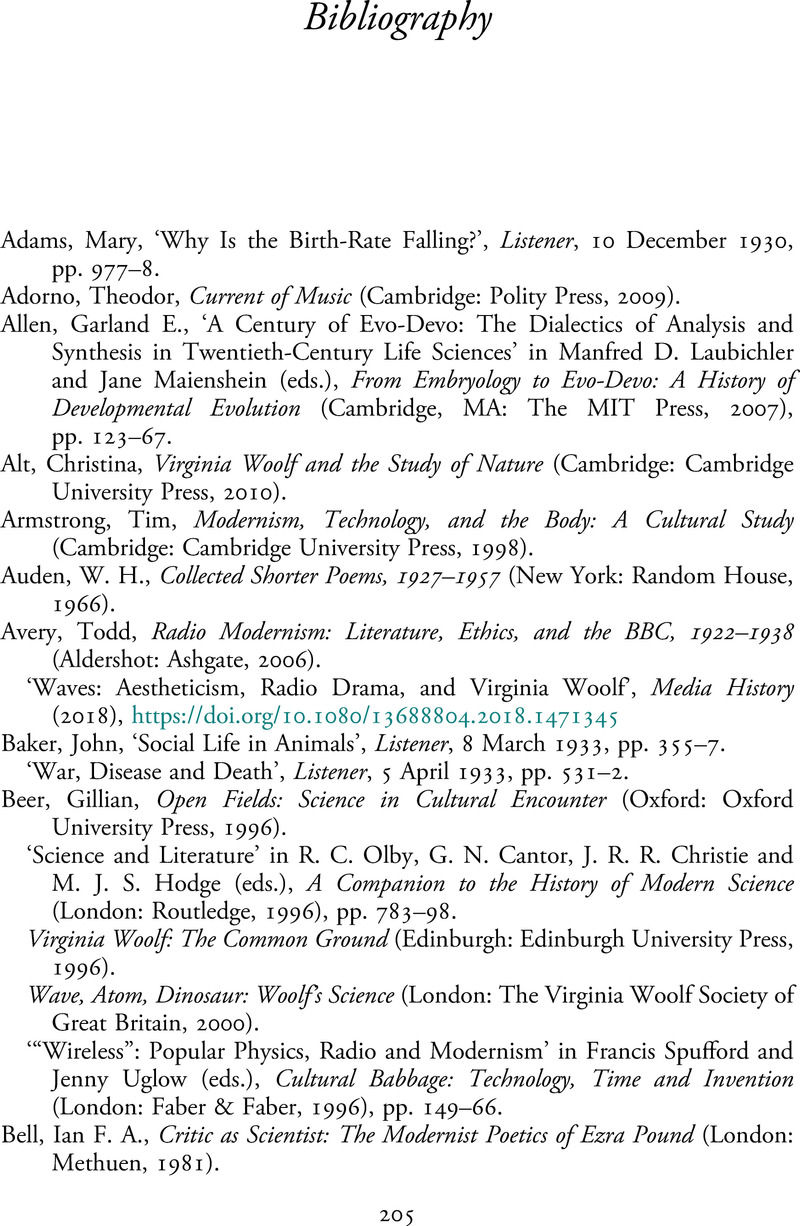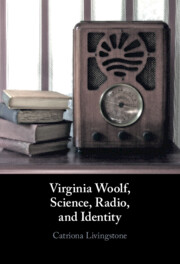Book contents
- Virginia Woolf, Science, Radio, and Identity
- Virginia Woolf, Science, Radio, and Identity
- Copyright page
- Contents
- Image
- Acknowledgements
- Abbreviations
- Introduction
- Chapter 1 Schrödinger’s Woolf
- Chapter 2 ‘Unity–Dispersity’
- Chapter 3 ‘Our Senses Have Widened’
- Chapter 4 Tigers under Our Hats
- Conclusion
- Bibliography
- Index
- References
- Virginia Woolf, Science, Radio, and Identity
- Virginia Woolf, Science, Radio, and Identity
- Copyright page
- Contents
- Image
- Acknowledgements
- Abbreviations
- Introduction
- Chapter 1 Schrödinger’s Woolf
- Chapter 2 ‘Unity–Dispersity’
- Chapter 3 ‘Our Senses Have Widened’
- Chapter 4 Tigers under Our Hats
- Conclusion
- Bibliography
- Index
- References
Summary

- Type
- Chapter
- Information
- Virginia Woolf, Science, Radio, and Identity , pp. 205 - 217Publisher: Cambridge University PressPrint publication year: 2022



